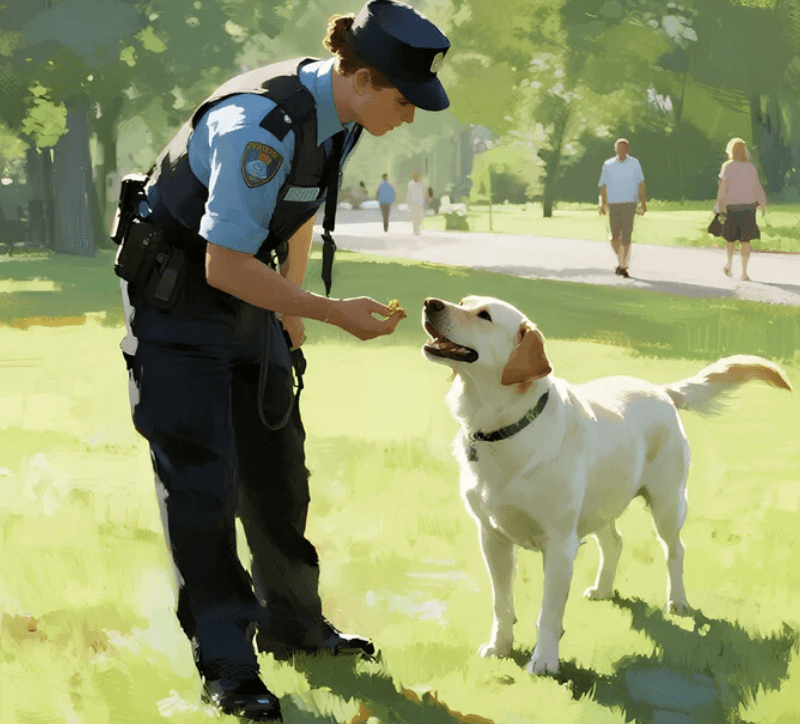How to Crate Train Your Puppy in 3 Days

Why Dog Crate Training Matters
Crate training is one of the most effective ways to teach your puppy structure, safety, and independence.
Whether you're a first-time pet parent or a seasoned dog owner, learning how to crate train your puppy in 3 days can make your life easier and your puppy’s life more comfortable.
A crate-trained dog is less likely to suffer from separation anxiety, engage in destructive behavior, or have accidents in the house. It’s also a key part of potty training.
Day 1: Introducing the Crate
Step 1: Pick the Right Crate
The first step is choosing a crate that’s large enough for your puppy to stand up, turn around, and lie down comfortably. Avoid oversized crates for young puppies, as they might eliminate in one corner and sleep in another. Consider a crate with a divider if your dog is still growing.
Step 2: Make the Crate Inviting
Place the crate in a quiet but active area of your home—such as the living room. Line the bottom with a soft blanket or puppy bed. Add a few toys and treats to make the crate feel like a positive space.
Step 3: Introduce Your Puppy to the Crate
Open the door and allow your puppy to sniff around the crate on their own. Toss some treats inside to encourage them to go in. Never force them inside. Praise them when they enter voluntarily, even if it's just for a few seconds.
Step 4: Begin Short Sessions
Once your puppy is comfortable exploring the crate, begin closing the door for short periods—30 seconds to 2 minutes—while you’re nearby. Gradually increase the duration over a few hours. Use praise or a special toy when they stay inside calmly.
Day 2: Building Confidence and Routine
Step 1: Mealtime in the Crate
Feed your puppy all meals inside the crate. This creates a strong positive association. Close the door while they’re eating, and open it once they’re finished and calm. This shows them that the crate is not a punishment.
Step 2: Add Short Crating Intervals
After meals, naps, and short play sessions, place your puppy in the crate for 15–30 minutes. Gradually increase the time throughout the day. Use calm verbal cues like "crate time" to build routine. If they whine, wait until they stop before opening the door—this avoids reinforcing whining behavior.
Step 3: Leave the Room Briefly
Once your puppy is comfortable being crated for short periods while you're nearby, practice leaving the room for a few minutes. Always return calmly and quietly to avoid making departures and arrivals a big event. This helps prevent separation anxiety.
Step 4: Crate Time During Quiet Hours
Crate your puppy during naturally quiet times like after exercise or play. A tired puppy is more likely to nap peacefully in the crate. Never use the crate for punishment or timeout—this damages the trust you're building.
Day 3: Full-Day Integration
Step 1: Test a Longer Crate Session
Now that your puppy understands the crate, try leaving them crated for up to an hour while you're doing chores or stepping out. Make sure they’ve gone potty beforehand and have access to a chew toy to stay occupied.
Step 2: Establish a Potty Schedule
Use crate time to reinforce a potty training schedule. Take your puppy outside first thing in the morning, after meals, play, and naps. Keep the crate clean and never leave them crated longer than they can hold their bladder—generally one hour per month of age, up to 4–5 hours max.
Step 3: Begin Overnight Crating
Move the crate to your bedroom for the first few nights. Puppies feel safer knowing you're close. Be prepared to wake up once or twice for potty breaks depending on their age. Use consistent nighttime cues like “bedtime” before putting them in the crate.
Step 4: Monitor Behavior and Adjust
Observe your puppy's reactions. If they bark or whine, wait until they stop to release them. If they seem unusually anxious, backtrack to shorter crating periods. Every puppy learns at a slightly different pace—patience is key.
Common Mistakes to Avoid
- Using the crate as punishment: This turns the crate into a negative space.
- Leaving them crated too long: This can lead to accidents and frustration.
- Responding to whining immediately: This teaches the puppy to whine for attention.
- Skipping crate time during the day: Sporadic crating confuses your puppy.
Benefits of Crate Training
Successfully crate-trained puppies grow into well-adjusted dogs. Benefits include:
- Faster potty training
- Safe space for rest
- Reduced separation anxiety
- Easy travel and vet visits
- Less destructive behavior
Helpful Crate Training Tools
- Interactive Toys: Keep your puppy entertained inside the crate.
- Crate Covers: Mimic a den-like environment for better sleep.
- Puppy Pads: For emergency accidents during overnight training.
- High-Value Treats: Use for crate entry and positive reinforcement.
What If It Takes More Than 3 Days?
Some puppies take longer than others. Factors like age, breed, and prior experiences can influence training speed. If your puppy isn’t ready after 3 days, don’t worry—stick with the plan.
Consistency and patience are more important than speed. Focus on small wins and celebrate progress.
Final Thoughts
Crate training a puppy in just 3 days is entirely possible when you follow the right steps and stay committed. By building a strong foundation early, you're giving your puppy the tools to grow into a happy, well-behaved dog.
Always use positive reinforcement, be patient, and make the crate a place your puppy loves to be in. You’ve got this!
 Related Articles
Related Articles





